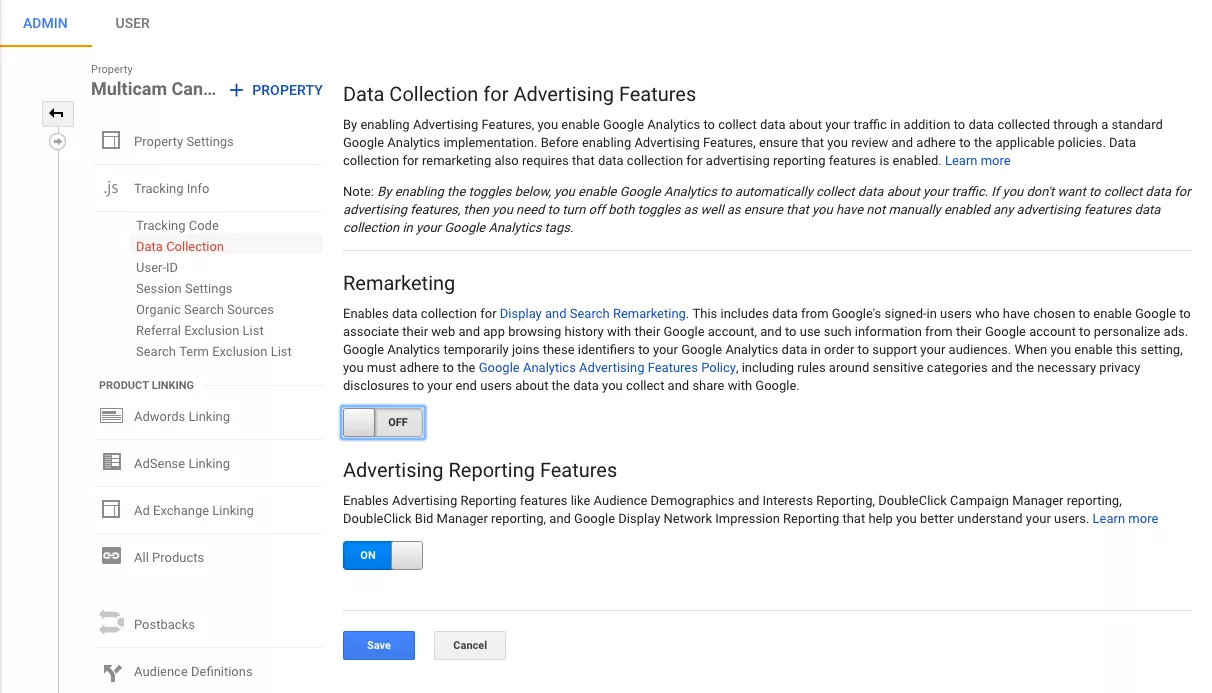Advanced Techniques for Remarketing In Google Analytics
Wiki Article
Maximize Your ROI With Remarketing in Google Analytics
In the realm of digital marketing, the usage of remarketing methods within Google Analytics has actually confirmed to be a potent device for enhancing roi. By utilizing the power of customer data and tailoring ads to certain target market sections, businesses can considerably enhance their conversion rates. However, the real vital depend on the art of precision - understanding customer habits, crafting compelling ads, and constantly refining methods to drive ideal results. The journey to taking full advantage of ROI with remarketing is a nuanced course paved with understandings and opportunities that can improve the trajectory of your advertising and marketing ventures.Understanding Remarketing in Google Analytics
Recognizing remarketing in Google Analytics is important for maximizing your electronic marketing technique. Remarketing permits you to target users that have previously seen your internet site or engaged with your app, offering them with customized advertisements as they surf various other sites or use other applications within the Google Present Network. This strategy aids keep your brand name top of mind and motivates users to return to your website, eventually boosting the possibility of conversion.By using Google Analytics, you can track the performance of your remarketing projects, getting beneficial insights right into customer habits, interaction, and conversions. This data enables you to fine-tune your targeting, messaging, and bidding strategies to enhance the overall performance of your projects.
Furthermore, recognizing the various kinds of remarketing lists available in Google Analytics, such as common, dynamic, and comparable target markets, enables you to develop tailored and extremely fractional campaigns tailored to details customer sections. This level of granularity can significantly improve the significance and impact of your remarketing efforts, ultimately maximizing your roi.
Setting Up Remarketing Lists
To effectively apply remarketing campaigns in Google Analytics, the initial action involves developing and setting up remarketing lists targeting particular individual segments based upon their communications with your site or app. By establishing remarketing listings, you can customize your marketing efforts to get to individuals who have actually already shown passion in your solutions or items.To begin, browse to the Admin section of your Google Analytics account and pick the Residential property where you desire to develop the remarketing checklist. After that, under the Property column, click on 'Target market Definitions' and select 'Target markets.' Next, click on the red 'New Audience' switch and select 'Create New' to specify the specifications for your remarketing list.

Crafting Efficient Remarketing Ads

When crafting your advertisements, focus on producing attention-grabbing headlines and engaging visuals that stick out to prospective consumers. Incorporate solid calls-to-action that encourage individuals to review your site and complete a wanted activity. Utilize dynamic remarketing to reveal tailored ads you can try here including services or products that individuals have actually previously checked out on your website.
Furthermore, make sure that your ads are mobile-friendly given that a substantial part of net web traffic originates from mobile tools. Examination different ad variants to recognize which designs and messages drive the most effective outcomes. By constantly refining and maximizing your remarketing ads based on efficiency information, you can optimize their performance and enhance your roi.
Studying Remarketing Performance

Through Google Analytics, marketing experts can track the performance of their remarketing projects in real-time, permitting them to identify fads, patterns, and areas for improvement immediately. By evaluating the data, marketing experts can identify which ads are carrying out well, which audience sectors are responding favorably, and which channels are driving one of the most conversions. This level of granularity enables online marketers to make data-driven choices to optimize their remarketing advocate far better outcomes.
Maximizing ROI With Remarketing
Analyzing remarketing information in Google Analytics makes it possible for marketing professionals to determine possibilities for maximizing roi (ROI) through strategic adjustments - What Is “Remarketing” In Google Analytics?. To take full advantage of ROI with remarketing, it is important to recognize the actions of your target market. By analyzing customer communications, such as the pages they saw, the items they viewed, or the activities they handled your website, you can customize your remarketing projects more successfullySegmenting your target market based upon their actions allows you to develop individualized and targeted advertisements that are more probable to resonate with them. By revealing pertinent ads to details segments of your target market, you can enhance the possibilities of conversion and eventually enhance your ROI.
Furthermore, evaluating different ad creatives, messaging, and deals can aid recognize what resonates best with your audience. A/B testing permits you to experiment with different components of your ads to establish what drives the highest possible involvement and conversion rates.
Final Thought
In final thought, optimizing ROI with dig this remarketing in Google Analytics requires a tactical strategy to examining user behavior, segmenting audiences, developing customized ads, and maximizing project efficiency. By leveraging data-driven understandings and checking different techniques, services can enhance their remarketing efforts to drive greater involvement and conversion rates. This methodical method ensures that resources are efficiently allocated in the direction of taking look here full advantage of rois in remarketing projects.Next off, click on the red 'New Target market' switch and select 'Produce New' to define the criteria for your remarketing list.
By constantly refining and optimizing your remarketing ads based on performance data, you can maximize their effectiveness and improve your return on financial investment.
By diving into these understandings, marketing experts can gain an extensive understanding of exactly how their remarketing initiatives are resonating with their target audience and driving conversions. To optimize ROI with remarketing, it is critical to recognize the actions of your target market.In final thought, maximizing ROI with remarketing in Google Analytics requires a calculated technique to assessing individual actions, segmenting target markets, developing customized ads, and maximizing campaign performance.
Report this wiki page